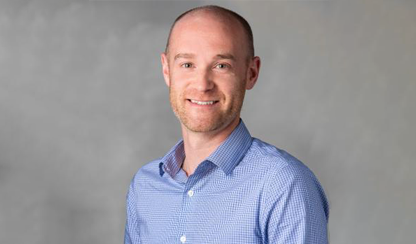Dr Kegan Moneghetti is a Cardiologist and Clinical Associate Professor of Medicine at the Baker Department of Cardiometabolic Health with a key interest in exercise medicine, cardiac imaging and precision health. His current research focus includes optimising the use of exercise testing in clinical care and and personalising cardiac rehabilitation to reduce the risk of secondary heart events and improve the quality of life for people who have suffered a heart event.
 For people who experience a heart event, like a stroke or a heart attack, regaining an optimal level of heart function is the ultimate goal. The good news is there is significant evidence supporting an increased chance of recovery and a lower risk of experiencing a secondary event for patients who undertake cardiac rehabilitation soon after their primary event.
For people who experience a heart event, like a stroke or a heart attack, regaining an optimal level of heart function is the ultimate goal. The good news is there is significant evidence supporting an increased chance of recovery and a lower risk of experiencing a secondary event for patients who undertake cardiac rehabilitation soon after their primary event.
Cardiac rehabilitation is a multidisciplinary program which incorporates everything from physical activity through to educational material. It is an opportunity to empower people by giving them the right resources and the opportunity to reinforce their learning by participating in programs to take control of their own health.
Despite its effectiveness, cardiac rehabilitation, or CR, is generally underutilised and inconsistently delivered. In fact, Australian data suggests that only one in four patients with acute coronary syndrome receive optimal care.
For Dr Moneghetti, this gap in the system is highly detrimental to our overall health as a nation — and it’s something he’s determined to change.
“Once you’ve had a heart event of some description, the risk of having that same event is much higher,” he explains. “No matter your blood pressure or cholesterol level, you’ve got heart disease. The plaque that built up and caused the event is still there — and that means you’re always at risk.
While we don’t yet have medications to dissolve plaque or completely eradicate cardiovascular disease, targeted treatments can improve blood flow to the heart muscle in the aftermath of these events.”
After discovering a passion for cardiology and exercise medicine as a medical student in Melbourne, Dr Moneghetti moved to the United States to undertake a postdoctorate fellowship at Stanford University. Here, his research demonstrated the vital role exercise testing plays in determining a person’s physiology and identifying those with cardiovascular disease who are at high risk of future events.
When a position as Principal Research Fellow at the Baker Heart and Diabetes Institute arose in 2019, it was a logical next step for Dr Moneghetti to return to Australia and continue his research.
“The opportunity to come back home felt like a lovely full circle,” says Dr Moneghetti. “The leadership of Professor Tom Marwick, the team at the Baker Institute and University of Melbourne, alongside the great cardiology clinical unit at St. Vincent’s Hospital who are very interested in exercise physiology, it was a clear fit to bring some ideas and concepts back home.”
Dr Moneghetti and his team are now seeking funding to advance various research projects that will prove the effectiveness of CR as a secondary prevention tool after a heart event.
They have identified three main areas of investigation. Firstly, they want to gather data to show the ideal time to begin rehabilitation — the earlier, the better. Next, personalising CR programs using eHealth or mobile technology and cardiopulmonary exercise testing to help medical practitioners develop a personalised exercise ‘prescription’. And lastly, using the gathered data to create patient profiles and monitor how these change over time.
So, what is the ultimate aim? Dr Moneghetti hopes to help patients increase their exercise capacity via a personalised program that gives them the best chance to regain and maintain their health after a heart event and reduce their risk of having another one. It’s something that he believes could revolutionise Australia’s national heart health.
“If we intervene early and undertake aggressive secondary prevention, we can get people back to a functional state of health similar to before. They’ll still be on regular tablets and monitored by their doctors and healthcare professionals, but they can make lifestyle choices moving forward that keep them healthy.
When it comes to exercise, we are currently not personalising the prescription. Just because you’re a 60-year-old male and you’ve had a heart attack, doesn’t mean you’re going to respond to the same exercises as another 60-year-old male who’s had a different type of heart attack and is on other medication.”
The aim is to gather enough evidence to show the effectiveness of early CR so that it one day becomes standard practice in every hospital in the country.
“In a decade, we hope that when someone comes into the lab after their heart attack, they’ll undergo an exercise test and have a blood test,” says Dr Moneghetti. “We will then have an algorithm that says, ‘Well, you need six weeks of aerobic activity. We know that’s going to give you the best outcome.’ But for another patient, we can say, ‘Actually, you need 12 weeks of aerobic activity to improve your long-term health outcomes.’ That is the ultimate personalised prescription.”
It’s a principle that not only promises to improve the quality of life for those affected by heart disease, stroke, or diabetes, but also keeps families together for longer.
We look forward to sharing more about projects focusing on cardiac rehabilitation and secondary prevention of heart events as they develop.

